

If you want to know more about dedecms, you can click: dedecms tutorial
Web page templates are htm files in templets, so writing templates means writing html. This article is not about the specific use of tags, but some understanding of web page templates. Includes basic tag syntax, the relationship between cover templates, list templates and document templates.
About tags
dedecms tag: is like html tag, but it is customized by Dreamweaver It consists of tag name, attributes, and InnerText.
Rewrite the file templets/index.htm
网站名:{dede:global name=cfg_webname/}<br/><br/>
<strong>最近登陆的会员</strong><br/>
{dede:memberlist row=6 signlen=30}
<a href="[field:spaceurl/]" target="_blank">
<img src="[field:face/]" style="max-width:90%" style="max-width:90%"/ alt="How to make a website template with dedecms" > [field:uname/]<br/>
</a>
{/dede:memberlist}Check the results by running the website homepage index.php.
Like dede:global is the tag name, name=cfg_webname is the attribute, and between the dede:memberlist tags is InnerText. In DreamWeaver, InnerText is also called the underlying template.
Short tag:A tag with only one side like global is called a short tag, which represents the value of an element.
Block tags: Paired tags like memberlist are called block tags, which generally represent a series of records. The code above means listing the tacit information of 6 members. A little research will reveal that these records come from a database.
[field:XX] This represents a certain attribute value in the record.
To summarize, what languages are used when writing templates: Html code and the new dedecms tag syntax. Css and Js have no new syntax and are called as external files.
Php and MySQL codes are greatly reduced, and part of the code related to database queries is replaced by tag syntax. For example, calling the memberlist tag is equivalent to accessing the data table dede_member. Php is mainly used for writing and modifying new modules such as plug-ins.
You don’t need to learn all tags, just learn global, field, php, arclist, list, pagelist and memberlist. Others need to be checked again.
To learn a tag, you must learn
1 The basic syntax of the tag, the tag name
2 Tags, the tag correspondence Web page template, and the logical meaning of the tag
3. Tag attributes and control of tag usage
4. Data source behind the tag , and the types of InnerText
two templates it provides
2.1 templets folder
System folder contains the default underlying template. When we do not write anything between block-level tags, it will automatically be called as the InnerText of the block-level tag.
Plus folder contains templates called by php in root_dir/plus. After some research, it may be possible to imitate the code of these templates, to be explored.
Default folder contains the default template, which is the main template for web page display. If you download other dedecms templates (unofficial default templates) on the Internet, there may be only one templets folder as this is enough for the look. The following is an analysis of the default folder.
I only used index.htm before, what are the other files used for?
I think these files can be divided into two categories:
The first category is not a complete page, it is included (due to the dedecms tag, the html document also can be included). Such as head.htm, footer.htm, etc.
The second category is the complete page, haha.
The second category is divided into cover (index) template, list (list) template, and document (content, article) template. The index_XX.htm in the folder is the cover template, and so on.
2.2 Testing of cover, list and document templates
SetTemplet in root_dir/index.php The path is changed to dirname(__FILE__) . "/templets/default/list_article.htm", and the displayed content is not complete. How to use these templates? Here’s how I explored it:
Open dedecms website backend management (by the way, please install the data experience package first so that you can have test data)
Click on website column management
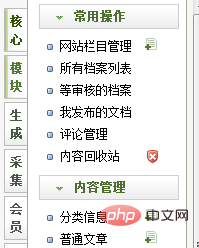

Change the midpoint of the page base
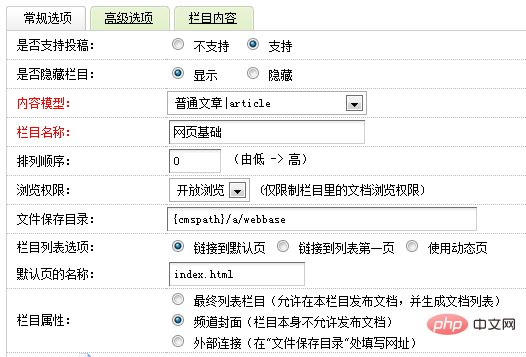
The column attribute in the general options is the channel cover
Then select the advanced options
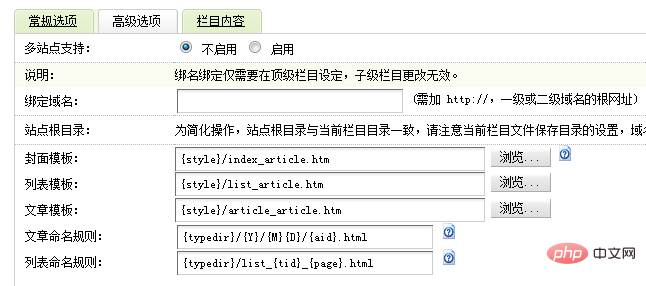
The cover template in the advanced options is{style}/index_article.htm
If the data you installed is the same version as mine, you will know that the web page is basically a first-level column, with many articles organized underneath.

Back to website column management

{style}/index_article.htm, the web page calls index_article.htm as the template.
The relationship between templates and columns
Each column has its own three templates, and the same template can be used by multiple columns . In other words, the template only provides styles, but the content ultimately comes from the database. This also explains why changing the path at SetTemplet in root_dir/index.php cannot display the complete content because the template is not bound to a specific column. This is also the characteristic of DreamWeaver as a content management system, which separates style and content. Let’s talk about the document template, which can be seen in the General Options->Column Properties. Articles cannot be published as a channel cover column. Then we select a final list column, such as "Html"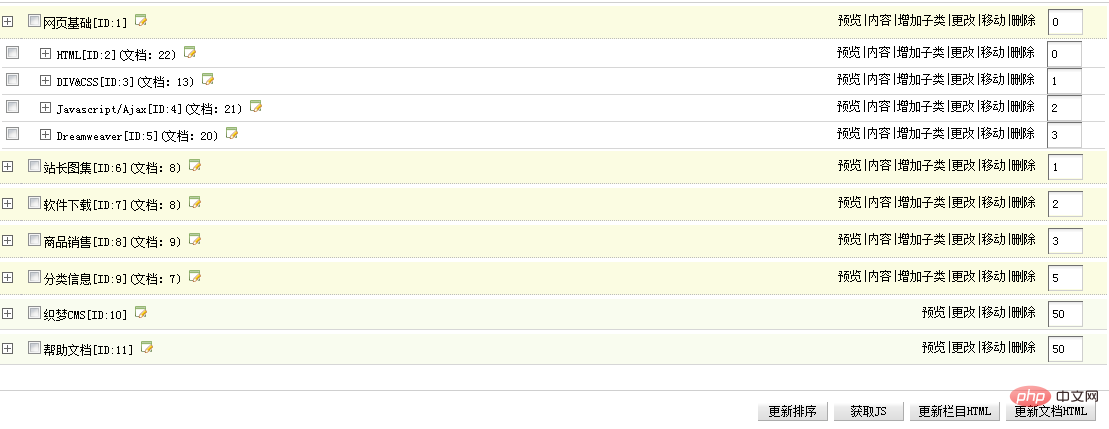
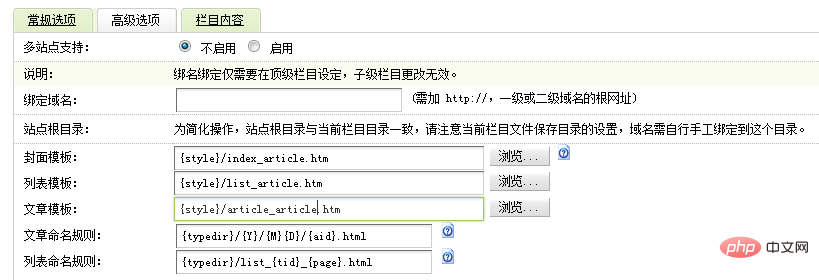


2.3 Channel
You can see that most of the templates in templates/default fall into these three categories, which shows their importance. Then index_article.htm, list_article.htm, article_article.htm is enough, what are the other ones for? This is about channels. Channels are types of columns, such as article channel, image channel, software channel (essentially a download channel), product (shop) channel, etc. . Channel is a content model. For example, animation and scenery can use picture channels. So there will be index_article.htm, index_image.htm, index_soft.htm, index_shop.htm. Each channel has its own three templates. So how to write a template, of course you must first learn the tag syntaxA. Function expansion, such as {dede: tag name function="function name (@me, other parameters) ” /}
B. Program directly in Innertext, which is the method that has been used before
Read index_article.htm, list_article.htm again, article_article.htm. Reading source code is the best way to learn^_^ Generally speaking, what you need to do when writing a web page is to write a web page template for each channel.The above is the detailed content of How to make a website template with dedecms. For more information, please follow other related articles on the PHP Chinese website!